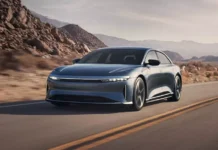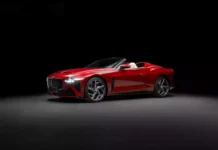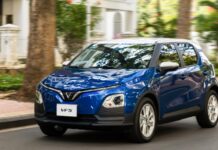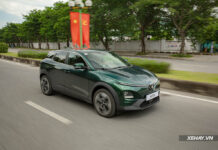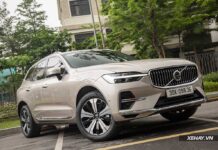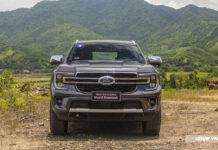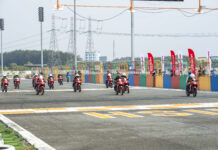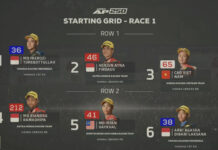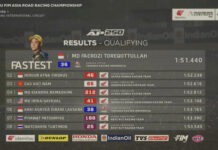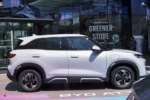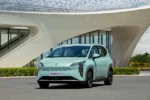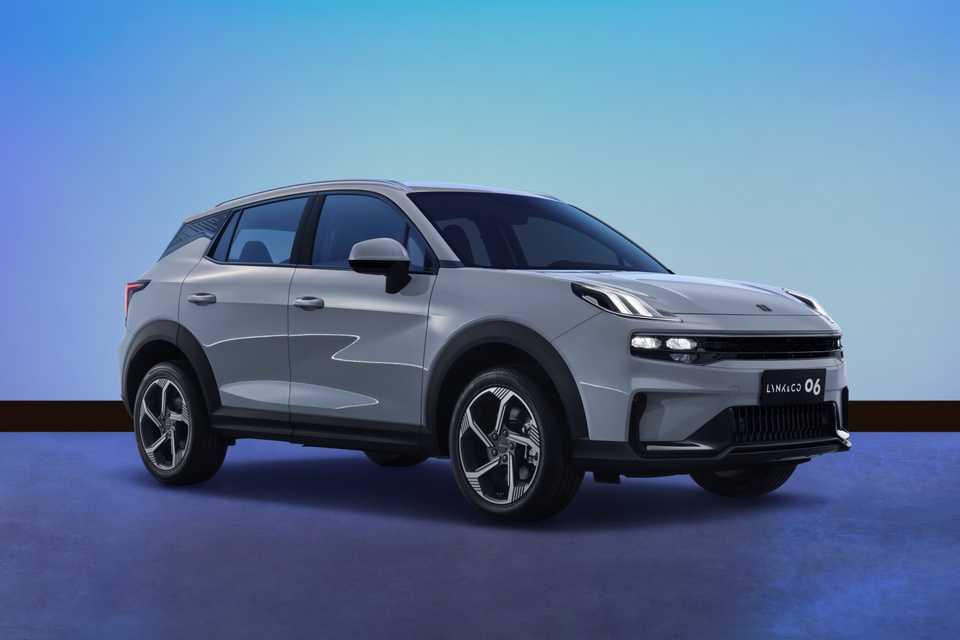
|
It’s no surprise that Chinese automakers are facing an uphill battle to capture the Vietnamese market. To overcome existing barriers and biases among Vietnamese consumers, a low-price strategy may continue to be the approach that Chinese automakers pursue.
Introducing More Affordable Models
Last week, the Geely-owned brand Lynk & Co introduced a new, more affordable Core Plus version of its compact SUV, the Lynk & Co 06.
More than a year after its market debut, Lynk & Co’s most affordable SUV has received a new variant that retains the same exterior design but removes the ADAS safety technology package to lower the price.
Compared to the Hyper Pro trim, which is priced at 729 million VND, the Lynk & Co 06 Core Plus is 50 million VND cheaper, with a listed price of 679 million VND.
|
|
|
The Lynk & Co 06 Core Plus sacrifices ADAS features for a lower price tag. Image: Lynk & Co. |
Similarly, the Chery-owned brand Omoda unexpectedly launched the C5 Luxury trim priced at 539 million VND, which is also 50 million VND cheaper than the Premium trim.
Compared to the higher trims, the Omoda C5 Luxury features halogen projector headlights, a traditional straight-shift gear lever, synthetic leather and fabric upholstery, and manually adjustable front seats.
The most significant change in the affordable trim is under the hood, where the Omoda C5 Luxury is equipped with a 1.5L naturally aspirated gasoline engine that delivers 115 horsepower and 138 Nm of torque. In contrast, the higher trims of the Omoda C5 are powered by a 1.5L turbocharged engine.
|
|
|
The Omoda C5 Luxury’s stripped-down cockpit. Image: Phuc Hau. |
Wuling Bingo currently offers two ranges, 333 km and 410 km, priced at 399 million VND and 469 million VND, respectively. However, at the launch event, the Chinese automaker revealed plans for a 203 km range version with a stripped-down cockpit and a price tag of 349 million VND.
As of now, TMT Motors – the distributor of Wuling electric vehicles in Vietnam – has not provided any further information regarding the most affordable version of the Wuling Bingo.
MG also introduced the New MG5, which features a distinct design, a manual transmission, and fewer amenities than the automatic MG5 variants. Priced at 399 million VND, the New MG5’s pricing is on par with subcompact cars in Vietnam, despite its size being comparable to compact sedans.
|
|
|
The New MG5’s pricing is competitive with subcompact cars. Image: Vinh Phuc. |
While not a standout model, the New MG5 has surprisingly become one of the most popular Chinese cars in Vietnam. According to Tri Thuc – Znews, the New MG5 is a key contributor to MG’s success as one of the leading Chinese automakers in the Vietnamese market.
Will a Low-Price Strategy Work?
While there is not enough evidence to make a definitive conclusion, the success of the New MG5 at a price point of 399 million VND may be a factor in encouraging fellow Chinese automakers to introduce “reduced-amenity” versions of their models at lower price points for Vietnamese consumers.
Before they can win over Vietnamese consumers with quality and after-sales service – factors that take time to prove – a low-price strategy may be the approach that Chinese automakers choose to make an initial impression.
|
|
|
Wuling Bingo is confirmed to have a more affordable version priced at 349 million VND. Image: Phuc Hau. |
When Omoda C5 Luxury was launched, the Chinese brand even offered promotions to bring the price below 500 million VND, directly competing with subcompact SUVs in Vietnam such as the Hyundai Venue (starting at 499 million VND), Toyota Raize (starting at 510 million VND), and Kia Sonet (starting at 539 million VND).
With the introduction of the Core Plus trim, Lynk & Co 06’s starting price drops below 700 million VND, matching other popular compact SUVs in the Vietnamese market, including the Mitsubishi Xforce (599-705 million VND), Hyundai Creta (599-715 million VND), Kia Seltos (599-764 million VND), Skoda Kushaq (599-649 million VND), and fellow Chinese models such as the Geely Coolray (538-628 million VND) and Omoda C5 (539-669 million VND).
Overall, the introduction of more affordable models by Chinese automakers not only increases diversity and competitiveness but also aims to attract customers with a low-price strategy, which is a common approach for many Chinese automakers in overseas markets.
However, as mentioned in previous articles, a low price can only create an initial impression on customers. To establish a long-term presence and achieve success, any automaker must demonstrate its commitment by ensuring vehicle quality and providing reliable after-sales service.
|
|
|
Ensuring quality after-sales service should be an important part of any automaker’s strategy. Illustrative image: Phuong Lam. |
The case of GAC Aion is a prime example of the failure of Chinese automakers’ low-price strategy in Vietnam. While the prices of the Aion ES (788 million VND) and Aion Y Plus (888 million VND) may be attractive in their respective segments, the quality of the vehicles and the development of dealerships and service centers have made Vietnamese consumers hesitant.
As a result, the electric car brand under the GAC group quickly withdrew from the Vietnamese market, closing its only showroom in Ho Chi Minh City just five months after its official launch.
Notably, Aion spent an entire year before its official launch researching and surveying the Vietnamese market. The Aion dealership in Ho Chi Minh City was also completed and had display cars long before the brand officially announced its presence in Vietnam.
The story of Chinese automakers and their quest for success in Vietnam will continue to unfold. For now, the introduction of more affordable models by these brands makes it easier for Vietnamese consumers to purchase cars, and it also helps to increase brand awareness.
Recommended Reads for Your Journey
The Xe channel presents a selection of captivating books with diverse themes. During your travels, there may be moments of relaxation, and these books can be your delightful companions.
3 Days, 6 New Cars: Vietnam’s Automotive Market Heats Up in Early July
The first three days of July witnessed an intense automotive frenzy in Vietnam with the consecutive launches of six new models, ranging from electric vehicles to luxurious SUVs. With price tags varying from VND 600 million to over VND 12 billion, these launches signify a heated battle for market dominance.





